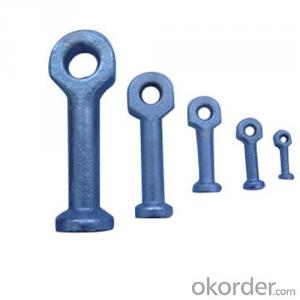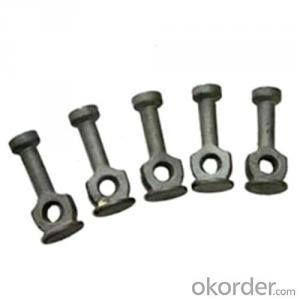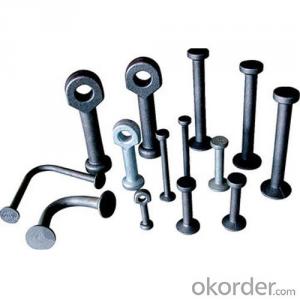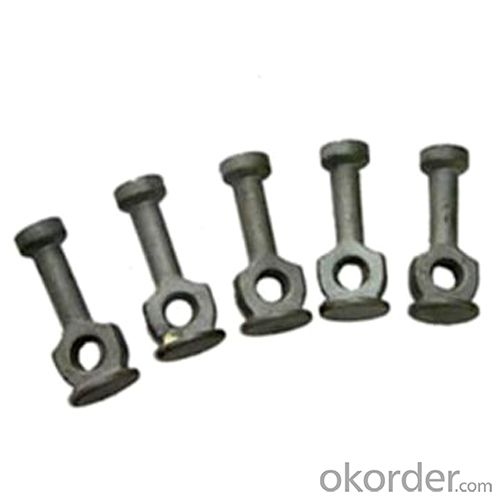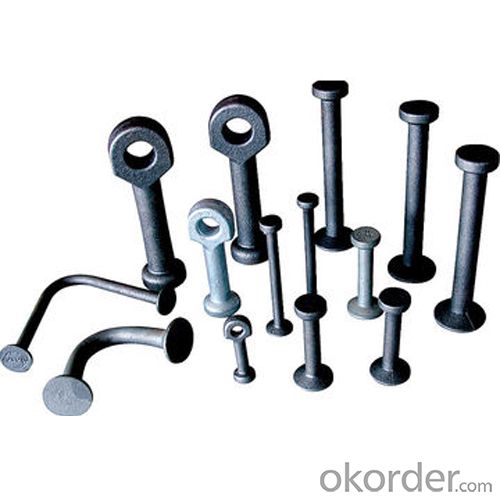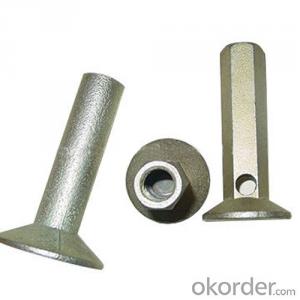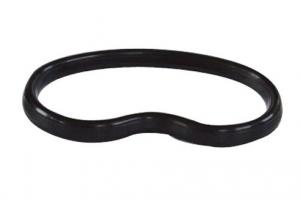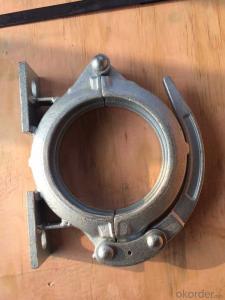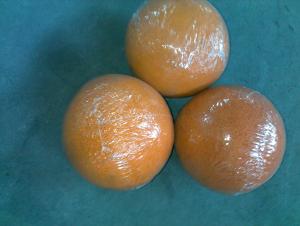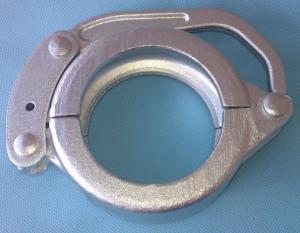Spherical Head Eye Anchor For Precast Concrete Accessories
- Loading Port:
- Tianjin
- Payment Terms:
- TT OR LC
- Min Order Qty:
- 100 pc
- Supply Capability:
- 10000 pc/month
OKorder Service Pledge
OKorder Financial Service
You Might Also Like
Lifting eye/O-anchor
Specifications:
1) Material: high-tensile alloy steel
2) Specifications: 1.3T, 2.5T (2T), 5.0T (4T), 10.0T (8T), 20.0T, 32.0T
3) Surface: zinc plating
4) Products available: swift lift, lifting eyes are used with the swift lift anchors to lift, handle and place precast concrete elements
Primary competitive advantages:
1)We can supply guarantee/warranty
2)Prompt delivery time within 25 days after confirming order
3)Eathu's products are enhanced by the factory QA and quality control checks during the production, if necessary each order can be send out with a certificate referring back to test
4)Precast concrete elements may be lifted several times after casting and during storage and erection-by using this system the designer and the worker manager ensure that each lift is carried out safely and quickly
Failure to use a designed and coordinated system could result in material breakage at some point during the production/delivery process
Market:
Asia
Australasia
Central/South America
Mid East/Africa
North America
Western Europe
FAQ:
Q1: How long about delivery time Concrete eye anchor ?
A1: The delivery time will be very short, normally we keep the raw materials for old customers and sometime we also keep stock products to
make sure delivery time in any emergency cases.
Q2: How do we guarantee the quality of our Concreteeye anchor ?
A2: We have established an advanced quality management system which conducts strict quality tests at every step, from raw materials to the final product. At the same time, we provide extensive follow-up service assurances as required.
Q3: How soon can we receive the product after purchase?
A3: Within three days of placing an order, we will book the vessel for goods. The specific shipping date is dependent upon international and government factors, but is typically 7 to 30 workdays.
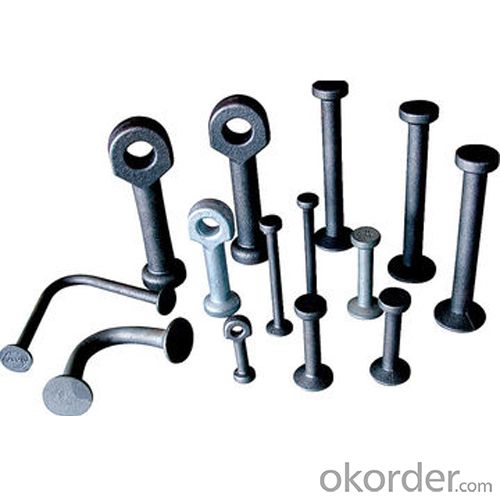
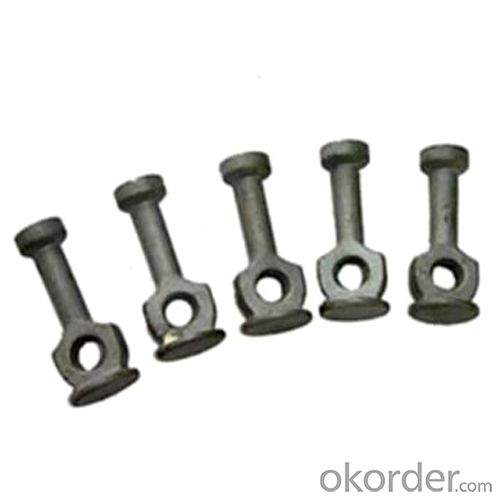
- Q: What is the role of a concrete pump agitator shaft seal?
- The role of a concrete pump agitator shaft seal is to prevent any leakage or seepage of materials, such as concrete or grout, from the agitator shaft. It is designed to create a tight seal between the rotating shaft and the stationary housing, ensuring that no material escapes from the pump during operation. This is crucial in maintaining the efficiency and effectiveness of the concrete pump by preventing any loss of material. The seal also helps to protect the agitator shaft from any external contaminants, such as dirt or water, which could potentially damage the pump. Overall, the concrete pump agitator shaft seal plays a vital role in ensuring the smooth and reliable operation of the pump, while also maintaining the quality of the pumped materials.
- Q: How often should control system sensors be calibrated or replaced?
- Control system sensors should be calibrated or replaced periodically, typically according to the manufacturer's recommendations or industry standards. The frequency of calibration or replacement depends on various factors such as the sensor type, its usage conditions, and the criticality of the measurements. Regular calibration is essential to ensure accurate and reliable readings, while replacement may be necessary if sensors become damaged, worn out, or show signs of malfunctioning. Ultimately, it is crucial to strike a balance between cost-effectiveness and maintaining optimal performance by following a proper maintenance schedule for control system sensors.
- Q: What are the indications of a faulty concrete pump seal?
- Some indications of a faulty concrete pump seal may include leakage of hydraulic fluid, excessive noise or vibration during operation, reduced pumping efficiency, and potential damage to other components of the pump.
- Q: What is the purpose of a concrete pump boom?
- A concrete pump boom serves the purpose of efficiently and effectively transferring concrete from the mixer truck to the desired location on a construction site. Typically mounted on a truck or trailer, the boom consists of interconnected sections that can be extended and maneuvered to access otherwise difficult areas. Concrete pump booms offer numerous advantages compared to traditional concrete placement methods. Firstly, they greatly reduce the amount of labor needed for concrete placement. The boom can reach over obstacles like buildings or structures, eliminating the need for manual pouring or crane usage. This saves both time and money during construction projects. Moreover, concrete pump booms enable precise and accurate concrete placement. The boom can be controlled remotely, allowing the operator to position the nozzle exactly where the concrete is required. This ensures a more uniform and evenly distributed concrete placement, resulting in a higher quality finished product. Furthermore, concrete pump booms enhance safety on construction sites. By eliminating the need for workers to physically transport and pour concrete, the risk of injuries and accidents is significantly reduced. The boom also enables concrete placement in hard-to-reach areas, minimizing the need for workers to climb or work at heights, further enhancing safety. In conclusion, a concrete pump boom serves to provide a more efficient, precise, and safe method for transferring and placing concrete on construction sites. Its ability to overcome obstacles, accurately control placement, and reduce labor requirements make it an invaluable tool in the construction industry.
- Q: What is the purpose of a concrete pump wear plate?
- The purpose of a concrete pump wear plate is to protect the essential components of a concrete pump, such as the housing and the rotor, from excessive wear and tear caused by the abrasive nature of concrete. It acts as a sacrificial layer, absorbing the impact and friction of the concrete, thereby extending the lifespan of the pump and reducing maintenance costs.
- Q: How long do rubber pistons typically last in a concrete pump?
- The durability of rubber pistons in a concrete pump can differ based on various factors, including the rubber quality, frequency of use, concrete type, and maintenance practices. On average, rubber pistons in a concrete pump typically endure for approximately 500 to 1,500 hours of operation. Nevertheless, certain top-notch rubber pistons have been reported to last even longer when given appropriate care and maintenance. To prolong the lifespan of rubber pistons in a concrete pump, it is essential to regularly inspect, lubricate, and replace worn-out components. It is worth noting that these estimations serve as general guidelines, and the actual lifespan may vary in specific instances.
- Q: How often should concrete pump water pumps be inspected and replaced?
- The frequency of inspection and replacement for concrete pump water pumps depends on several factors including the workload, operating conditions, and maintenance practices. Generally, it is recommended to inspect the water pump at least once a month to ensure its proper functioning. During the inspection, it is important to check for any leaks, unusual noises, or signs of wear and tear. If any issues are identified, immediate action should be taken to resolve them, such as repairing or replacing damaged parts. As for replacement, it is difficult to provide an exact timeframe as it varies depending on the quality of the pump, the intensity of use, and the level of maintenance. However, a general guideline is to consider replacing the water pump every 1-2 years for heavy usage or every 3-5 years for moderate usage. Regular maintenance, such as cleaning and lubricating the pump, can extend its lifespan and minimize the need for frequent replacements. It is important to note that these recommendations are general guidelines and may vary depending on the specific manufacturer's instructions, industry standards, and local regulations. It is advisable to consult the manufacturer's guidelines and seek professional advice from experts in the field to determine the appropriate inspection and replacement schedule for concrete pump water pumps in your specific circumstances.
- Q: How can a faulty concrete pump control valve affect the pumping operation?
- A faulty concrete pump control valve can adversely affect the pumping operation in several ways. Firstly, it may lead to an inconsistent flow of concrete, causing disruptions in the pouring process. This can result in uneven distribution of concrete, affecting the quality and structural integrity of the project. Secondly, a faulty control valve may cause excessive pressure build-up within the pump, leading to potential damages or leaks. Additionally, it can impact the overall efficiency and productivity of the pumping operation, resulting in delays and increased costs. Therefore, it is crucial to ensure that the concrete pump control valve is in proper working condition to maintain a smooth and efficient pumping process.
- Q: How does a concrete pump clamp work?
- An integral part of a concrete pump is the concrete pump clamp, which is utilized to securely fasten and stabilize the concrete delivery pipeline. Its function is to firmly grasp the pipeline, eliminating any potential movement or leakage throughout the concrete pumping procedure. Typically comprised of two primary components, the concrete pump clamp consists of the clamp body and the wedge. The clamp body, constructed from durable steel, possesses a curved structure tailored to the pipeline's shape. Equipped with bolts or knobs, it can be tightened or loosened to attach the clamp to the pipeline. In contrast, the wedge is a metal piece that is inserted into the clamp body. Its purpose is to apply pressure to the pipeline when the clamp is tightened. By manipulating the bolts or knobs, the wedge is pushed deeper into the clamp body, effectively squeezing the pipeline and establishing a secure grip. The secure grip achieved by the concrete pump clamp is essential as it guarantees a seamless and uninterrupted flow of concrete without any leaks or disruptions. It upholds a consistent and steady movement of concrete from the pump to the desired destination. Furthermore, the clamp contributes to the stability of the pipeline, preventing any shifting or displacement during the pumping process. In summary, the concrete pump clamp assumes a crucial role in the efficient and safe operation of a concrete pump. It ensures the secure placement of the concrete delivery pipeline, facilitating a smooth and uninterrupted concrete pumping process.
- Q: What are the common signs of wear and tear in a concrete pump cylinder?
- Some common signs of wear and tear in a concrete pump cylinder include cracks or fractures on the surface, loss of smoothness or rough texture, leakage of hydraulic fluid, reduced pumping efficiency or pressure, and increased noise or vibration during operation.
Send your message to us
Spherical Head Eye Anchor For Precast Concrete Accessories
- Loading Port:
- Tianjin
- Payment Terms:
- TT OR LC
- Min Order Qty:
- 100 pc
- Supply Capability:
- 10000 pc/month
OKorder Service Pledge
OKorder Financial Service
Similar products
Hot products
Hot Searches
Related keywords
